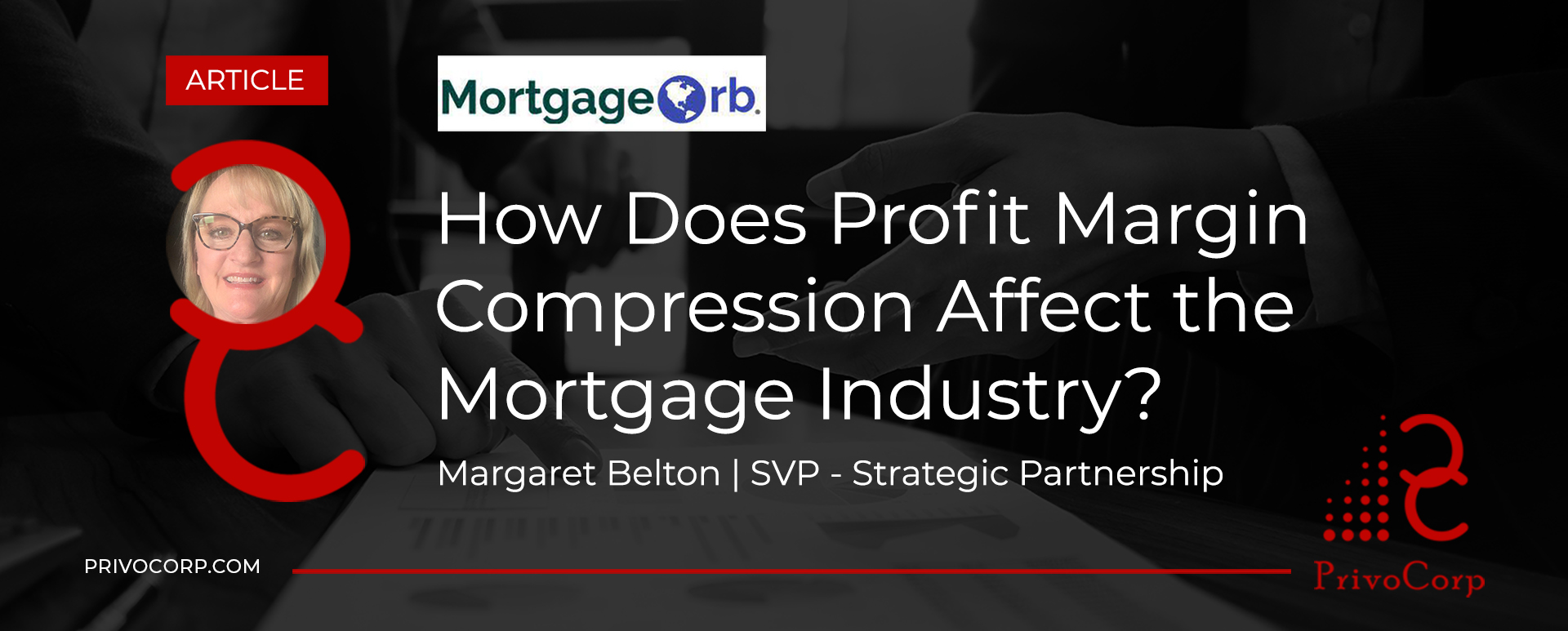Profit margin compression is currently one of the most significant factors impacting profitability and business efficiency for mortgage lenders.
Lender profit margin expectations have consistently fallen over the years since 2015. According to Fannie Mae’s Quarterly Mortgage Lender Sentiment Survey, lenders’ profit margin outlook declined in the second quarter of 2021 with 46% of lenders claiming they were expecting lower profit margins throughout the fourth quarter.
Experts forecast that lenders need to prepare for margin compression in the coming months because it’s likely to be significantly worse than 2018. So far, the market conditions seem to be in line with this prediction.
While profit margin compression affects all banks and mortgage lenders equally, it affects smaller lenders the most. They do not have the same flexibility, resources, or control as the larger, more established lenders, so they are less able to bear the margin compression storm.
Reasons for Rising Profit Margin Compression
The mortgage industry and its transactions are complex in nature, which leads to increases in production cost, especially compared to relatively streamlined refinance mortgage transactions, which drove a majority of the origination volume in 2020.
Besides, some lenders who were forced to scale up their production capacity to meet the surge of last year, have been slow to ramp down, leading to productivity losses as well.
Another aspect is that since the mortgage industry is struggling with low demand, lenders have been forced to cut loan processing fees to remain competitive. This has affected their profit margins.
Thirdly, in some cases, mortgage firms that increased investments in technology and operations – as was the need of the hour – they are starting to see the costs for them without the benefit of record revenue.
Another reason is increasing competition. Lenders these days have to face tough competition from start-ups that often operate only out of a website without too much investments – as well as from large enterprises that have surplus money to take risks.
Besides, lenders also have to be more careful now as the housing financial plans mature and buyers become more aware while engaging in the mortgage process.
Add to the above the issues of an increasingly evolving and demanding regulatory and enforcement environment, and the need for compliance resources.
A survey of lenders across the U.S. has pointed that a whopping 61% believe that regulations sometimes smother their operational efficiency by reducing their profit margin outlook.
The impact of challenging regulatory compliance has led to changes in workflows, especially for smaller lenders.
The combined result of all of these factors is that mortgage lenders are bound to face widespread margin compression for the foreseeable future.
Why Conventional Strategies May Not Help
Traditionally, mortgage businesses have found a number of ways to address the issue of margin compression. Many mortgage lenders have already taken the plunge on their own towards increased automation and improved technology. However, the issue is that they may not be able to see the ROI of these steps immediately.
Additionally, if there were some strategic mistakes that were made at the time of investment – like implementing new technology that doesn’t fit a lender’s tech requirements optimally – such investments could actually prove even more costly in the future.
Besides, some lenders adopt other conventional methods to reduce expenditure like personnel cuts, discretionary and nonessential budget cuts, and even decreasing the budget for resources and support departments that aren’t directly tied to profit centers.
Unfortunately, such steps can impede operations in many ways and affect overall productivity negatively.
How Lenders Can Address Profit Margin Compression
As declining profits remain a frequent and alarming concern, it is necessary for lenders to understand how they can fight profit margin compression. What follows are some effective ways for mortgage lenders to combat the problem:
Work on the correct pricing: One step is for lenders to perform a comprehensive analysis of client profitability and compare it against price sensitivity at the product level. This can later be worked upon by identifying the vital client relationships that are part of the portfolio, and then finally deducing what price works best for them.
Optimize lending processes: Improving the lending process should be a go-to strategy at every level. Optimization at a higher level can help lenders maintain a balance between their various lending products such as mortgages, refinancing and so on. This can help bring in better changes in pricing, cost transparency, etc. At a lower level, optimization can help streamline day-to-day processes and help build efficiency while reducing prices.
Outsource mortgage support: Another effective way of managing profit margins compression is to outsource mortgage support. Partnering with the right mortgage support services companies will enable lenders to achieve higher goals by providing them with access to a team of experienced and dedicated loan processors.
Outsourcing mortgage support can empower lenders to improve their profit margins while offering cost-effective services to increase their revenues.
Mortgage processing support companies use cutting-edge technology to improve the mortgage process. Since these companies have teams to manage the loan process, they have streamlined systems to offer faster turnaround time and enhanced profitability. They understand the impact of margin compression and provide high-quality services at highly affordable prices, which help mortgage companies improve their profit margins.
As operational costs increase and profits margins tighten, lenders need to focus on acquiring the right tools to work effectively, communicate efficiently and reduce overall turnaround times. While they will continue to face challenges from rising compliance costs and competition, this challenging business environment can also create opportunity for lenders to perform better.
In this process, lenders can rely on mortgage support service companies to help them find innovative ways to leverage technology, streamline processes, optimize staff, and maximize vendor performance to provide a better customer experience.
Margaret Boice Belton is senior vice president, strategic partnerships at mortgage outsourcing firm PrivoCorp, which recently acquired Peoples Processing.
This article is originally published by – Mortgageorb








